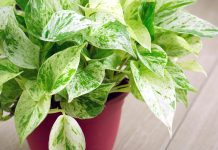It’s the time of year when thoughts turn to outdoor living and GARDENING! And you might be wondering if it is getting to be time to plant a vegetable garden. Crisp lettuce, ripe red tomatoes, cucumbers, peas, but wait a minute, there’s lots to do before we eat. It might sound boring, but now is the time to think about where you will plant, and then what you will plant. The thing to think about is SOIL.
Why is soil so important? Healthy vegetables come from healthy soil. We need to feed the soil to feed the plants, and the plants feed us. Soils depleted of vitamins and minerals will produce plants that are depleted of vitamins and minerals. They might not even grow well, but even if they do, you think you are eating healthy foods and you might not be. The best vegetables are the ones you grow in healthy soil, pick when ripe, and eat soon after. They taste better too (ever had a store bought tomato in the middle of winter?)!
If you are planning to use your own plot of land, you need to test your soil to see what nutrients are in it, and possibly add things to it. You can get your soil tested by the Cooperative Extension agent in the state in which you live. Here’s how: take 4 or 5 hand trowels of soil from about 4 to 6 inches below the surface in the area in which you will plant. Spread out the area you are digging from. Now mix all the samples in a plastic bag and this is the bag you will bring to the Extension Office in your county. There is usually a minimal fee for this service, but the information you get back is invaluable. However, it takes 4 to 6 weeks to get the report back, so if you want to go this way, do it now! If you can’t do this, you might be able to find a home testing kit in the local gardening department. Some test for various minerals, and all test for pH. The pH of a soil is VERY important. Plants need 6 macronutrients and 6 micronutrients in the soil to grow well and 3 from air and water (we need those macro and micro nutrients also!). If the pH of the soil is too acid, or too alkaline, the nutrients will not get absorbed in to the plant, but stay locked in the soil. The same applies for lawns—ever see someone put lots of fertilizer on the lawn but the lawn still looks sickly? Wrong pH!
If you are using containers to plant vegetables, you probably will be putting prepared soil in those containers, and that’s easier. You could also put prepared soil on top of your garden plot and make a raised bed and not bother with the testing if there is no time.
There are two ways to go to amend the soil, organic and chemical. For the sake of health, organic goes a long way. Generally, when you see chemical fertilizers, you see 3 numbers on the bag, like 5-10-5. That tells you the percent of Nitrogen, Phosphorus and Potassium in the fertilizer. If you see a bag of organic fertilizer, you might see lower numbers, even a 0 for one of the three digits. That’s because organic fertilizers are made from plant and animal wastes and each type has a different set of numbers. Yes, I mean manure! Chicken manure might have numbers like 4.5-3.2-1.3. You can see why it’s easier to use chemical fertilizers. Easier, but the drawbacks are also easy to see: usually fertilizers give you the top three minerals and not the next three that are also needed in large amounts by plants—calcium, magnesium, sulfur. Or those micro nutrients—iron, manganese, boron, copper, zinc, molybdenum. Soil science can be very confusing and time consuming to get right!
So what’s a gardener to do? Compost! You can make it, you can buy it, you can get it free! Of course, it might be a little late to start a compost pile for this year’s garden, so you can go to the local garden store and find some already bagged for you. You might be lucky enough to have an ecology site nearby, a place where they take the leaves you rake up in the fall, and the branches and twigs and turn it into compost and mulch. Then it’s free! The reason compost is so good is that it takes nutrients in plants and recycles them with the help of worms, fungi, and bacteria so that you can add it to your soil to boost the nutritional content. And the best part, you won’t have to worry about pH, because the pH of compost is neutral, even it is made of something acidic like oak leaves.
So pick out your garden site (6 hours of sun is best), amend the soil with compost by digging it in to the already existing soil and then start thinking about what you will plant. Tend to the soil first, and you will have a healthy garden this year!


